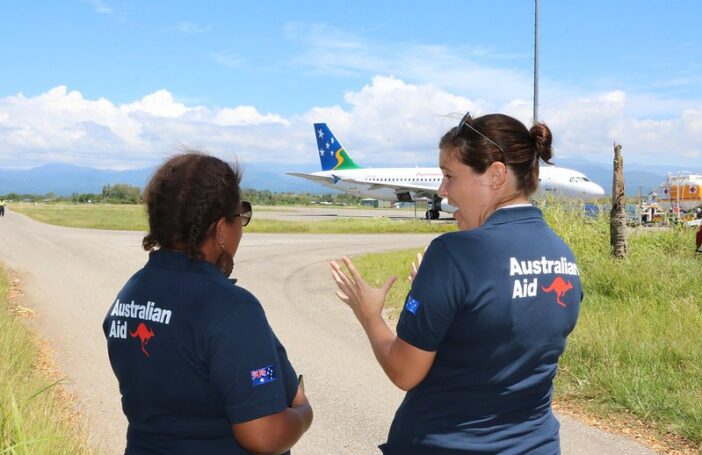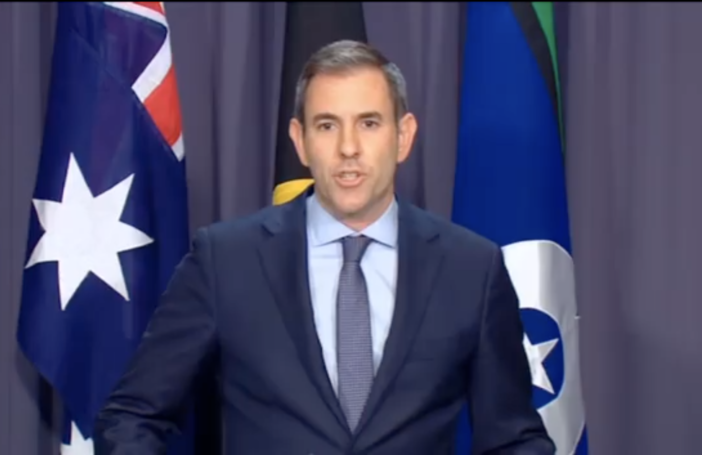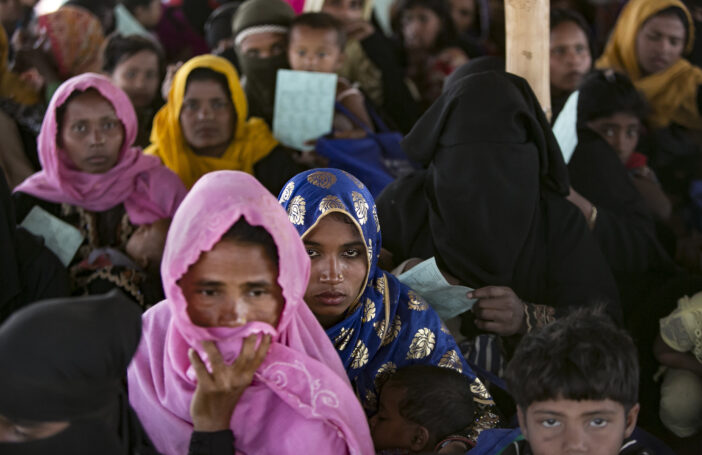In allocating the aid cuts announced in December 2014, Australia’s 2015-16 aid budget for the most part followed a simple and implacable logic: protect the immediate neighbourhood and humanitarian programs, pay the bills that have to be paid, all but eliminate aid to far-flung places and reduce everything else by 40 per cent to achieve the required average cut of 20 per cent. As Stephen Howes and Matt Dornan have shown, Australia effectively took a $16 billion detour into terrain normally occupied by more generous second-tier donors and is now returning to its former path, apparently unchanged by its experiences.
The Australian aid program can be divided into ten exclusive and exhaustive components, which are listed below together with the 2015-16 budget allocations to each component, and a comparison with allocations to the same components in 2014-15.
 Perhaps it was not considered feasible, diplomatically or practically, to use this year’s savagery to alter the balance of allocations in favour of the countries and the international organisations, funds and programs most likely to use aid effectively. Certainly it would have been desirable to see aid allocated more along these lines, particularly by extending the cuts to at least some countries in the Pacific so that cuts in higher-impact areas of the aid program might have been less. Performance-based allocation was in fact a central theme in foreign minister Julie Bishop’s mid-2014 ‘new aid paradigm’. (It might be recalled that she promised, in launching that policy framework, to establish a Performance Incentive Fund in the 2015-16 budget, but this idea has now been dropped, and not only because it can no longer be afforded.)
Perhaps it was not considered feasible, diplomatically or practically, to use this year’s savagery to alter the balance of allocations in favour of the countries and the international organisations, funds and programs most likely to use aid effectively. Certainly it would have been desirable to see aid allocated more along these lines, particularly by extending the cuts to at least some countries in the Pacific so that cuts in higher-impact areas of the aid program might have been less. Performance-based allocation was in fact a central theme in foreign minister Julie Bishop’s mid-2014 ‘new aid paradigm’. (It might be recalled that she promised, in launching that policy framework, to establish a Performance Incentive Fund in the 2015-16 budget, but this idea has now been dropped, and not only because it can no longer be afforded.)
However, changing allocation shares is clearly a lot easier with a growing aid program. It is understandable, at a tactical level, that a government would like the idea of being able to say to its various partners that they were in some sense treated alike. With these aid cuts, the desire to be able to say this has prevailed over some other quite glaring considerations, most notably the stark difference between Asia’s fast-growing middle-income countries and its least-developed countries, including Afghanistan and Myanmar. The latter, like the former, lost 40 per cent of their Australian aid.
In fact, though, not all consumers of Australian aid were treated alike, or in line with the logical schema above. Seven instances of this are detailed below.
- The Department of Foreign Affairs and Trade (DFAT) no longer faces a cap on the costs of aid administration. The ‘five per cent rule’ imposed in the 2014-15 budget process only lasted one year. Departmental funding for aid administration in 2014-15 was $251.3 million, exactly five per cent of the aid budget. In 2015-16 it will the same, $251.3 million, which is 6.2 per cent of the reduced aid budget. While it’s good that more people will not lose their jobs, this allocation calls into question the logic used to justify previous job cuts — i.e. large reductions in planned aid levels mean that DFAT doesn’t need as many aid administrators. Thus it seems the ‘merger dividend’ is now being realised by DFAT, which also received funding in this budget to expand its diplomatic network. The $22 million Direct Aid Program, which gives DFAT Heads of Mission a handy capacity to make small, discretionary and visible grants to development-related activities, was also not cut at all despite being a conspicuous beneficiary of the aid scale-up that ended in 2013. Not so many years ago, it was under $5 million per annum.
- While mainstream NGOs were largely shielded from cuts, volunteer-sending agencies were not. NGOs will lose five per cent of their centrally-administered funding relative to 2014-15; volunteer-sending agencies 30 per cent. DFAT’s web site states that just over 2,000 volunteers were funded for assignments in 2013-14, so a rough guess would be that 650 fewer volunteers will be supported in 2015-16. Given that volunteer-sending agencies are few and for the most part now operate essentially as contractors, presumably they were considered unlikely to squawk. There is no other obvious reason why the cuts would fall disproportionately on volunteers, and of course reluctance to squawk is not a good reason.
- Cambodia is protected, with a cynical-looking same-nominal allocation, but gets none of the additional aid promised to it last year. Australia promised Cambodia $40 million over four years in connection with the bilateral refugee resettlement arrangement agreed last year. This was to fund ordinary development programs, not programs related to resettlement (which will be separately funded). Cambodia can hardly be held responsible for the reluctance of people on Nauru to resettle there, and in any case some have now agreed to do so. So, whatever one might think of the bilateral refugee resettlement arrangement, this looks to be a case of holding out on a deal.
- UN Women is largely protected, with a cut of only five per cent, yet other UN organisations including UNDP, UNICEF, UNFPA, UNAIDS and WHO will all be cut by 40 per cent. The cuts to these latter organisations, aside from being severe in themselves, are hardly good news for women, or children. Protecting the allocation to just one UN organisation seems rather token. A further point here is that the distinction between humanitarian and non-humanitarian UN organisations, protected and mostly not protected, respectively, is not real. UNDP and UNICEF, in particular, do a great deal of their work in response to emergencies and protracted humanitarian crises. (Disclosure: I’m on the board of UNICEF Australia). And of course the WHO cut is either odd in the context of the 2014-15 Ebola outbreak, or else a comment on WHO’s performance in response to it — but we know it can’t be the latter because the cut, like so many others, is 40 per cent.
- Nepal is alone in South and West Asia in being protected from bilateral program cuts. The six other programs in that region all took 40 per cent hits. Emergency response and reconstruction assistance could have been provided to Nepal in any quantity regardless of the size of the bilateral program. Obviously no minister would wish to be accused of slashing aid to a country in Nepal’s current predicament, so the outcome was inevitable. However, it is worth recalling that we saw something similar happen with Australian aid to the Philippines after Typhoon Haiyan, which hit in November 2013. The bilateral allocation to the Philippines was increased by 10 per cent in January 2014 at a time when other programs were being reduced as part of an in-year aid cut of $650 million. But now the Philippines has suffered a 40 per cent cut in the 2015-16 budget. Such could be Nepal’s fate next year.
- The amount of aid allocated to other government agencies other than DFAT dropped by only 14 per cent, such that their share of the aid program grew from 7.9 per cent to 8.3 per cent. This is very hard to defend at a time when organisations like UNICEF and country programs like the Myanmar program are being cut by 40 per cent. At the very least, it’s to be hoped that Julie Bishop is able to trade on her generosity to other portfolios in this budget when they come looking in future for bites from the aid program. (In another case of DFAT exceptionalism, the Australian Centre for International Agricultural Research, an aid-funded statutory agency that sits within the foreign affairs portfolio, experienced a cut of only five per cent from $96.1 million to $91.7 million.)
- Centrally-funded tertiary scholarships are down 30 per cent, and many of the country programs that fund scholarships from bilateral allocations are down by more (much more, of course, in the case of Africa). So, on the one hand, it looks like Australian universities might expect to receive at least 30 per cent fewer aid scholars. On the other hand, it seems this was a rare case in which the government could not quite bring itself to apply the axe consistently with a 40 per cent cut.
Other departures from the logical schema are less significant. For example, it is not possible to read anything into reductions in funding to global health, education and environment programs. Payments to the relevant organisations are lumpy and likely to have been concentrated in 2014-15, when more funding was available. This, for example, explains the big drop in funding for the Global Partnership for Education in 2015-16. Likewise, cash payments to Multilateral Development Banks jumped by 26 per cent, but this is just a case of the past asserting itself in the present. Large replenishment commitments under the previous government, and in the early days of this one, are coming home to roost.
Robin Davies is the Associate Director of the Development Policy Centre.






Robin–excellent commentary. However, may I point out a minor factual error regarding aid to Cambodia. According to DFAT’s Cambodia country page ‘ An additional $10.0 million will be provided in 2015-16 in line with Australia and Cambodia’s agreement on refugee resettlement.’
Thanks Ravi. I had relied on the bilateral aid figure for Cambodia provided in the budget highlights table here, but the page to which you refer (here) makes it clear that the $10 million is not regarded as part of the bilateral budget. It’s unclear why, though. Presumably it is being drawn from the cross-regional allocation since it shows nowhere else.
Robin – sage commentary, as always.
I comment in this post as it is the most recent in the threads relating to the budget release; in reality I am probably commenting broadly about the cuts now the dust has settled a little.
We’ve heard the speeches from both sides about their versions of a future for Australia. The relative silence on the slashing of the aid budget in both speeches is telling. Being “approximately the 13th largest donor” is not a mask Australians should accept with any pride.
I am under-impressed though unsurprised. I was enthused by the New Aid Paradigm’s focus on a results/investment link, so I am somewhat bemused by its application to these budget cuts.
Of the previous cuts I argued that we needed to talk less about how to spend and more about how to leverage. That was when we were at 5 billion. Today I argue the same holds true.
I am not defending the cuts; I don’t think they can be defended. None of us should accept these decisions as good, but it is what it is. I doubt tomorrow the Government will come out declaring a typo and put back another billion or so into the aid program. So it is now up to us all to do what we can to support what has, to date, been considered a strong aid program and we need to help to keep it that way.
We are a myriad of stakeholders – NGOs, private sector, civil society, contractors and so on. So while it has been previously highlighted through The Development Policy Centre’s surveys that we all have vested interests, never has it been more important to be as one.
The aid program needs us (and others) to succeed. We know it and so does the aid program, yet none of us alone are the panacea for development.
It is the right thing to come together and work with the aid program to ensure it delivers. It is also the right thing to come together and maintain the rage.
We are better than approximately 13th and the world deserves us to be better than that. Could together we create leveraged results better than what is being invested by ‘number one’ donor? I don’t know but shouldn’t we at least have a go?
The allocations to UN agencies demonstrate just how little the Government took into account their own rhetoric when it came to making the cuts. As you rightly point out, Robin, the distinction made between ‘humanitarian’ agencies and ‘non-humanitarian’ agencies was entirely arbitrary – based not on their demonstrated results, actual mandates or the size of their programs, but simply where they happen to sit in the budget structure. The result is that Australia now provides $19 million in core funding to UNRWA, despite the limited geographic scope, relatively small budget, and complete lack of programs in Indo-Pacific – while at the same time providing only $12 million to UNDP and $21 million to UNICEF, organisations with extensive and important programs in Australia’s own region, much larger budgetary needs, and mandates at least as relevant to the Abbott government’s stated priorities.
It’s not clear to me why the budget – which is notably thin on details and basically leaves it up to individual program managers to make and determine how to absorb the cuts within a specific program – needed to dictate exactly the amount each UN agency would receive. It didn’t do this to other multilateral organisations (other than the ICRC), nor to the NGO program or any of the country programs. Why wasn’t it left to those who actually understand and have ongoing relationships with the UN organisations to make the difficult decisions about how to divide up the resources once the cuts had been made?
An excellent analysis, thank you. Would seem an opportunity to conduct a hard-hitting, independent aid review focused on performance and effectiveness, which involves intended beneficiaries. I’ve returned from 14 years in PNG health, a major recipient. Does anyone seriously believe Australian aid to PNG health is a success story?